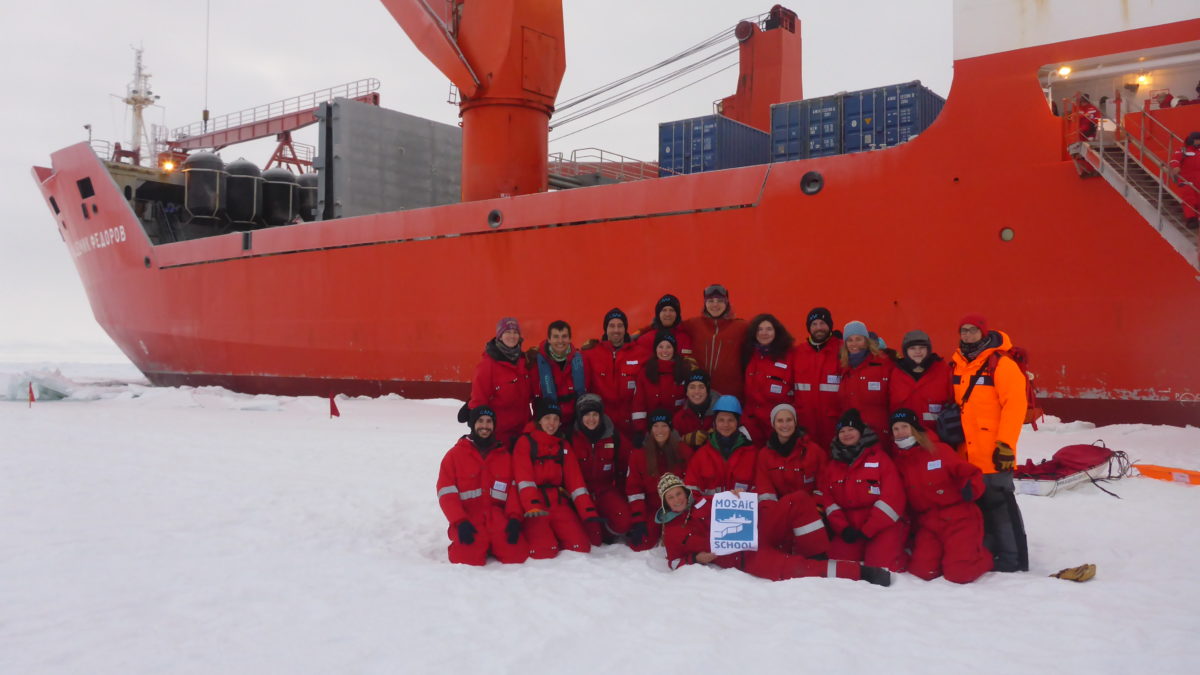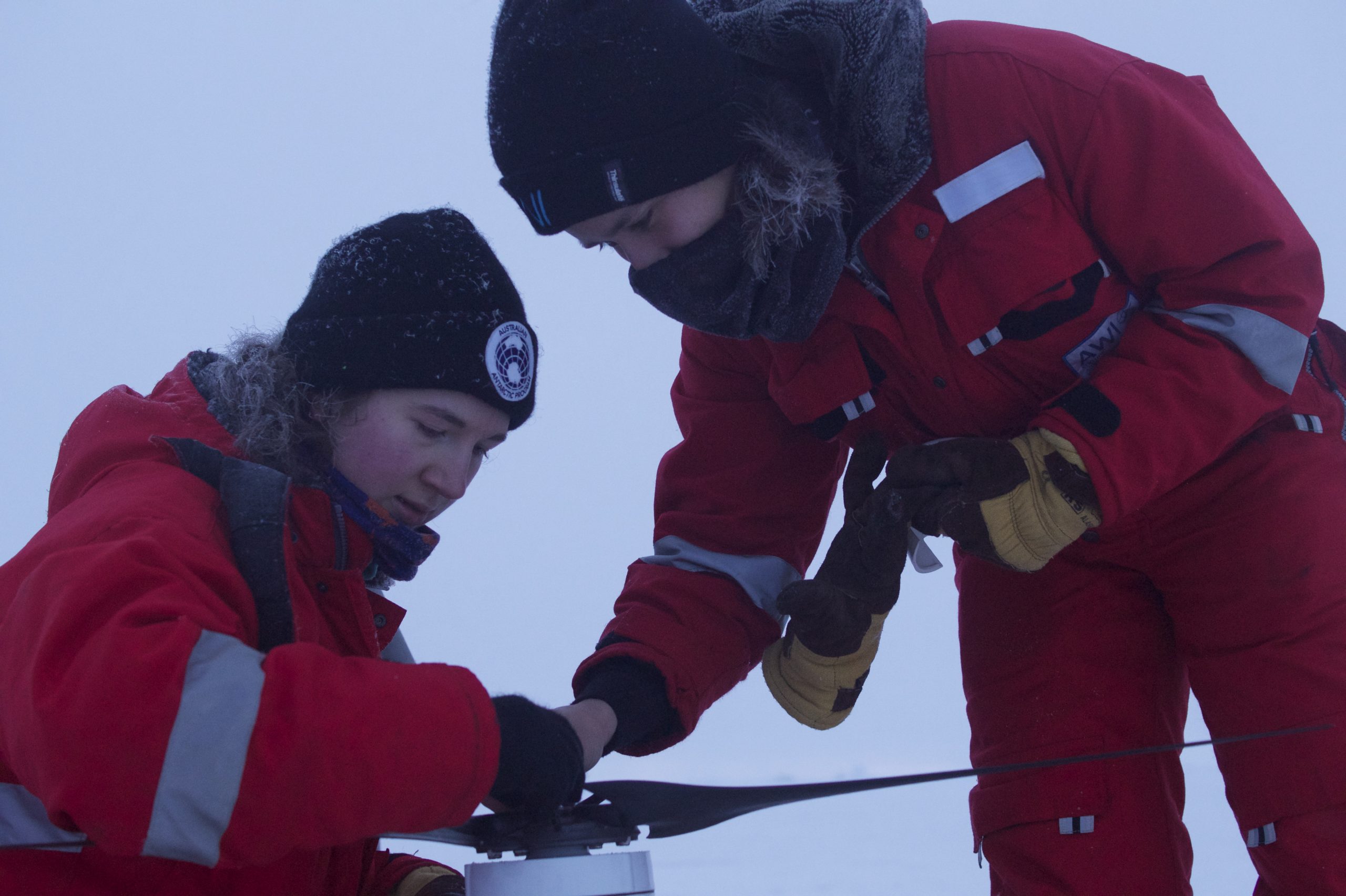
Computing drift forecasts
Another week has passed in the MOSAiC School and we have done plenty.
The beginning of the week was busy with modelling classes given by Dr. Thomas Rackow. Following the classes, we had two days to work on modelling exercises with python, where we computed simple drift forecasts. The idea is to use this new acquired set of skills to help creating a forecast program for the Polarstern Floe drift once it is established.

MOSAiC School students Lisa Craw and Natalia Ribeiro (Picture: Katharina Weiss-Tuider)
Speaking of which, on the evening of the 2nd, the German cruise leader, Dr. Thomas Krumpen, communicated us that the Polarstern found a promising floe! Essentially that meant we could meet the Polarstern, transfer fuel, cargo and people and finally start the set up of the Distributed Network. The students are expected to help the groups with their equipments on board and on ice, which kept most of us busy with assembling, calibrating and testing instruments for parts of the days. Some of the students are also getting ready to perform a ice floe survey for all L-sites. Several meetings were made to plan the sampling design and measurements that will be taken, not to mention the introduction of the software to process the data.
For the MOSAiC School, this meeting also allowed us to bring a lecturer from the Polarstern to the RV Akademik Fedorov. Dr. Dorothea Bauch lectured on the use of tracer-oceanography in the Arctic, specially in the winter. We learnt how to use tracers to understand areas of sea ice formation and had the opportunity to hear about her previous work in the Laptev Sea and Laptev Sea Polynya.
In our free time, we also had our chance to see polar bears up close for the first time. Most of us were enjoying our free time on the deck when Igor Vasilevich spotted our visitors portside at a fair distance from RV Akademik Fedorov. In about 15 min, they gradually made their way towards the boat and came as close as they could without entering our vessel.
On the 5th, some of us had their first opportunity to get on ice. Our first L-site was selected and the DN set-up started with the right foot. We did successfully finish that site, setting up the tone for the next week’s work. Next week, we are interrupting the lectures for a while and focusing on the hands-on part of the school experience.
Natalia Ribeiro



